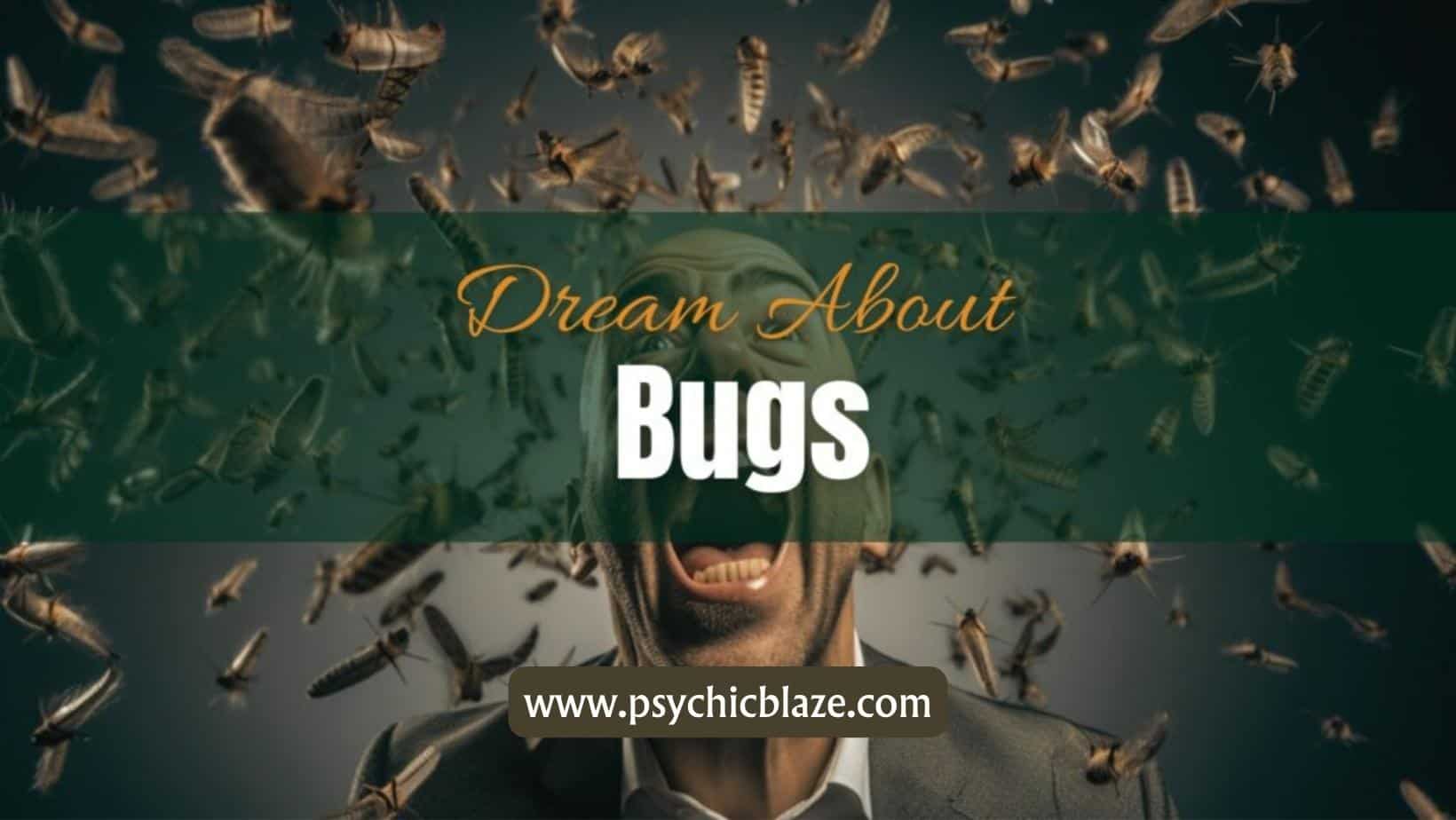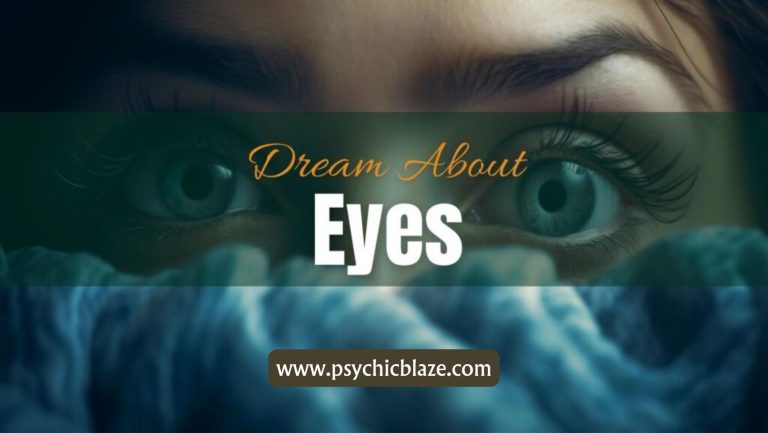Dreams About Bugs: Psychological Interpretations
From the prettiest butterfly to the most reprehensible roach, insects of all kinds are enmeshed in a colorful tapestry of symbolism and meaning. Thus, in dreams, bugs are representations of a complex array of emotions, thoughts, and experiences.
Bugs in dreams thereby provide a host of psychological insights. From compelling representations of fear to profound symbols of transformation, the emergence of insects in dreams can often be a gateway to self-realization.
Unique circumstances, experiences, and memories can further clarify the meaning of the appearance of bugs in dreams. Given the many nuances in interpreting dreams, psychological perspectives can aid in understanding dreams about bugs.
A Psychological Overview of Bugs in Dreams
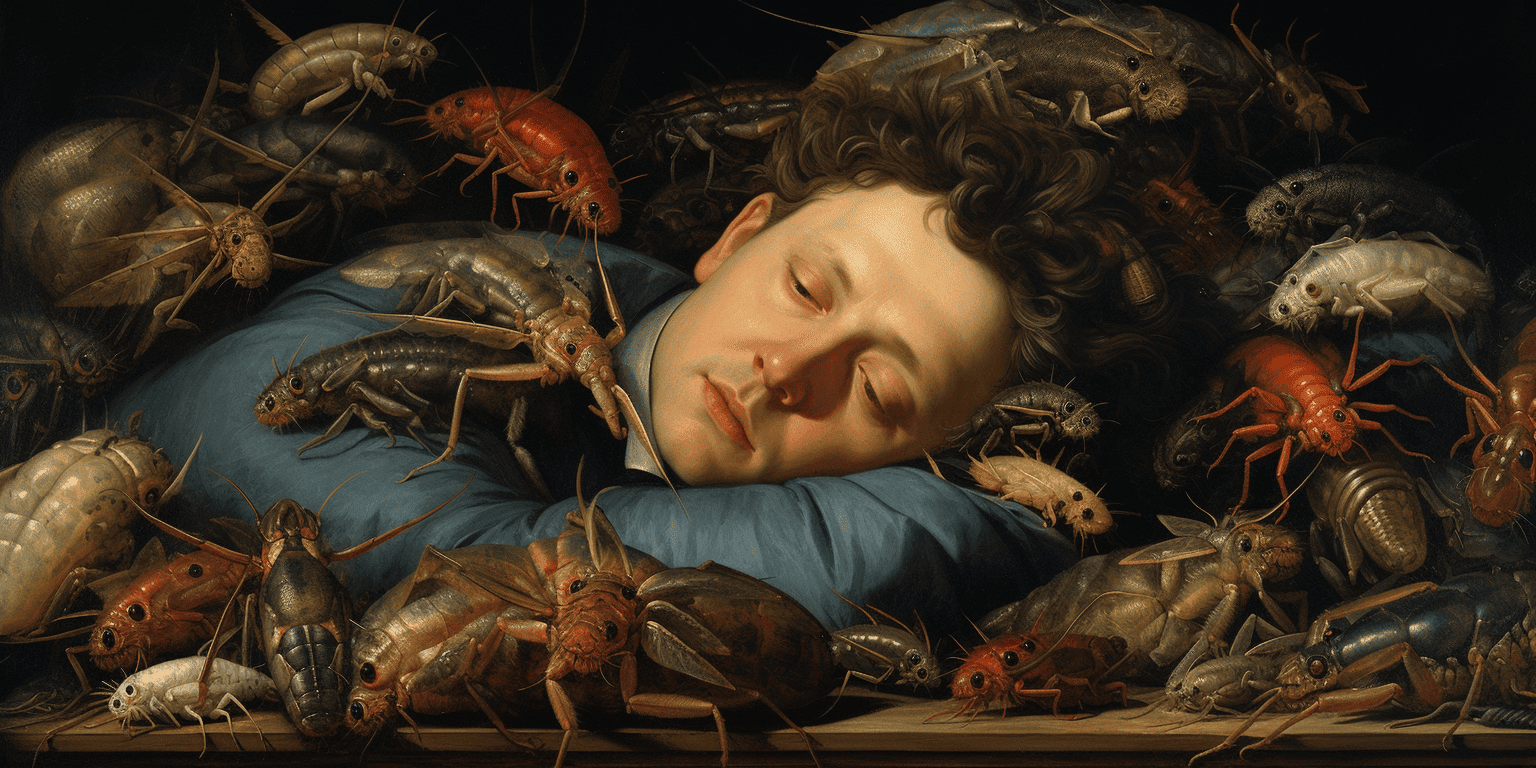
There are approximately 1.4 billion insects for every person on Earth. As such, bugs are a common sight in waking life, ingrained in many people’s memories, and are among the most common animals to appear in dreams.
In fact, the appearance of bugs in dreams has long captivated people’s imaginations and piqued the interest of psychology. For instance, a study on people’s associations concerning bugs found that bugs are often seen with anxiety, fear, and avoidance.
It’s not surprising that many approaches to psychological dream interpretation generally view bugs in dreams as representations of negative thoughts, such as dread and worry from problematic people or situations in waking life.
These feelings are often embodied by dreams of parasitic and pestilent insects, like fleas, wasps, and grasshoppers. The more intrusive and hideous the bug, the more intimate its affinity to our inner stress and harm.
However, given the diversity of bug species, dreams of some bug species can also have positive meanings. For instance, insects like butterflies and beetles have been interpreted as symbols of transformation, progress, and the achievement of one’s potential.
Moreover, the metamorphic nature of many insects can parallel our capacity to move on from our old problems and change ourselves for the better. Even the hardiness of invasive insects can be taken as a sign of one’s resilience.
Dreams About Bugs in Jungian Analysis
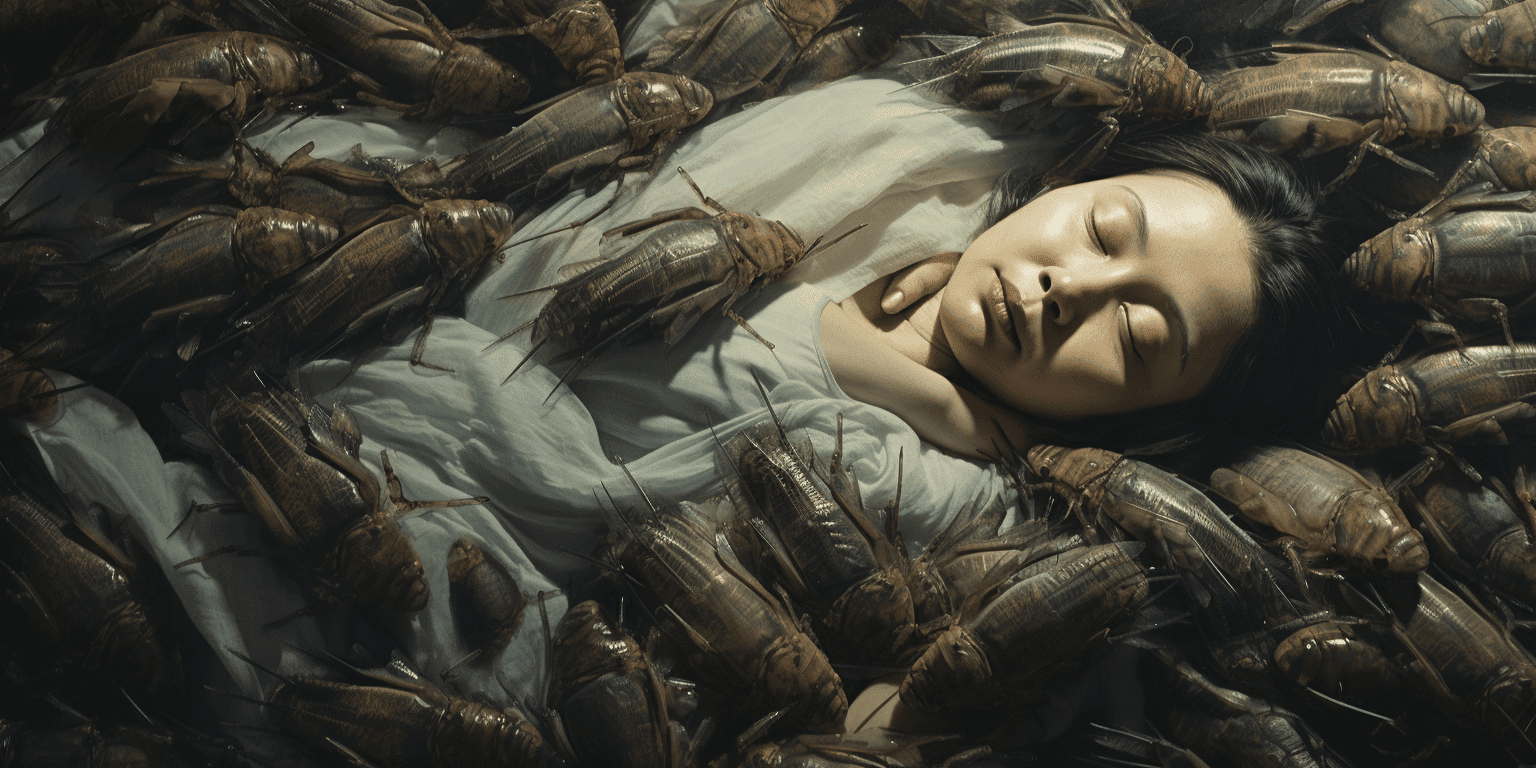
Jungian analysis understands dreams to be a conduit between the conscious and unconscious sides of our minds. Essentially, dreams are symbolic messages that reveal unseen aspects of ourselves and, by unraveling our dreams, we come closer to self-realization.
Moreover, archetypes are a vital component of understanding our dreams. These are universal symbols infused with meaning and insight, drawn from both collective and individual experiences. Specific dream elements often embody certain archetypes.
Insects are a potent example of such elements. In Jungian analysis, bugs in dreams are seen as embodiments of the Shadow, the archetype embodying our most repressed traits and feelings. However, in some cases, bugs can be archetypes of transformation.
In these instances, bugs are closely attuned to the Jungian concept of individuation. This is the process of self-discovery towards uniting and harmonizing the conscious and unconscious sides of ourselves toward a better “whole.”
Therefore, in the Jungian perspective, dreams of bugs brim with insights into the most hidden and instinctual sides of our minds and, in some instances, can be compelling indicators of our path toward self-discovery and self-transformation.
The Shadow Archetype in Bug Dreams
The Shadow is the archetype often related to bugs (and vermin in general, such as fleas, ticks, lice, and bed bugs). The Shadow embodies our darkest wishes, instincts, and characteristics that discreetly influence our thoughts and emotions.
Our natural revulsion to insects aptly reflects our subconscious disgust and denial over the traits and thoughts that aspects of the Shadow represent. Their tendency to be small, difficult to spot, and actively elusive also mirrors the Shadow.
On a more fundamental level, however, Jungian analysis conceptualizes bugs as intimately tied to our most instinctual drives and impulses. This is because of their primitivity and age, which further explains the deep connection of bugs with the Shadow, especially in dreams.
Dreaming of bugs can be our unconscious minds’ way of alerting us to the surfacing of our Shadow. The many possible types of bugs we may encounter in our dreams can drastically affect their implications concerning our Shadow.
If we’ve dreamt of parasitic bugs, then this can denote secret wishes to exploit or harm another person. These are often drawn from aggressive urges, likely felt after conflict in real life. Hence, such a dream can be a warning from the subconscious.
However, a dream of beneficial and harmless bugs such as caterpillars, ants, and moths can mark a successful attempt to reconcile with one’s Shadow. For instance, this can mean having confronted our problematic traits by exercising self-control.
Bugs as Transformational Symbols of Individuation
In Jungian analysis, bugs that are profoundly intertwined with cycles of change are extensive symbols of transformation. Particularly, their manifestation in dreams bears many connections to the Jungian concept of individuation.
Individuation is the process of achieving a better and more integrated self. Fundamentally, this means acknowledging and uniting the dissonant and repressed parts of our psyche. This connotes an emotionally involved process of change.
While bugs can oftentimes imply the presence of our Shadow, they can also aid in identifying and confronting it. The realization of the Shadow is a crucial process of individuation, in which some types of bugs in dreams are far more intertwined.
These are often bugs that undergo metamorphosis (butterflies, bees, cicadas, etc.), and bugs with a cultural connection to resurrection (scarabs, moths, silkworms, etc.) are strongly connected to rebirth, transformation, change, and growth.
As such, dreaming of these kinds of bugs can be signals from the unconscious to deeply reflect on our process toward self-realization. More interestingly, they can be direct indicators of incoming or actualized changes in ourselves.
Dreams of these bugs can be especially pertinent during or after we’ve made far-reaching resolutions concerning our lives. These can be decisions to stop unhealthy habits, cut off problematic relationships, and pursue our aspirations.
Dreams About Bugs in Freudian Psychoanalysis

A classic approach in dream interpretation, Freudian psychoanalysis famously views dreams to be the “royal road to the unconscious.” According to this view, dreams reveal our most instinctual desires and urges, which can often be violent and sexual.
Freudian psychoanalysis thereby interprets dreams through the language of symbolism. Much of this symbolism draws itself from experiences in waking life, although the chief influences of their meaning are childhood memories, sexual impulses, and the different parts of our psyche.
As animals like bugs are often connected to wildness and baseness, their symbolism is greatly interlinked with instinctual, primal, and impulsive thoughts and emotions. Hence, dreams of bugs may uncover disturbing desires and feelings that require recognition.
Bugs as Freudian Dream Symbols of Fear
Freudian interpretations of bugs in dreams frequently link their meaning to intense feelings of terror and disgust. Typically, dreams of bugs exhibit displacement. This means the bugs are a projection of unacceptable desires to a more acceptable form.
Because insects are often quite terrifying and disturbing by themselves, the unconscious thoughts and feelings that they displace can be very visceral and potent. For instance, dreams of bugs may indicate deeply repressed childhood traumas.
Likewise, bugs in dreams can be reflections of our conscious and unconscious phobias, especially after a frightful encounter in waking life. There may be acutely embedded terrors that need careful management.
Dreams About Bugs in Gestalt Therapy
Dream interpretation according to Gestalt therapy understands dreams to be projections of the self. The people, objects, and animals we encounter in our dreams are understood as representations of our traits, personalities, and identities.
Bugs in dreams are, in this view, representations of different parts of the self, seeking redress and solidarity. By understanding and relating to the bugs in our dreams, we may come to understand these parts and make peace with them.
For instance, as most people attribute bugs to feelings of revulsion and fright, bugs in dreams can mean aspects of our appearance or personality that we find undesirable. From a Gestalt perspective, these parts attempt to be known and accepted in dreams.
This is, however, a general view. Gestalt therapy always encourages unraveling the meaning of dream elements like bugs according to our reflections and experiences. Hence, Gestalt therapy recommends techniques to meaningfully recount and constructively process our dreams.
Gestalt Techniques in Interpreting Bugs in Dreams
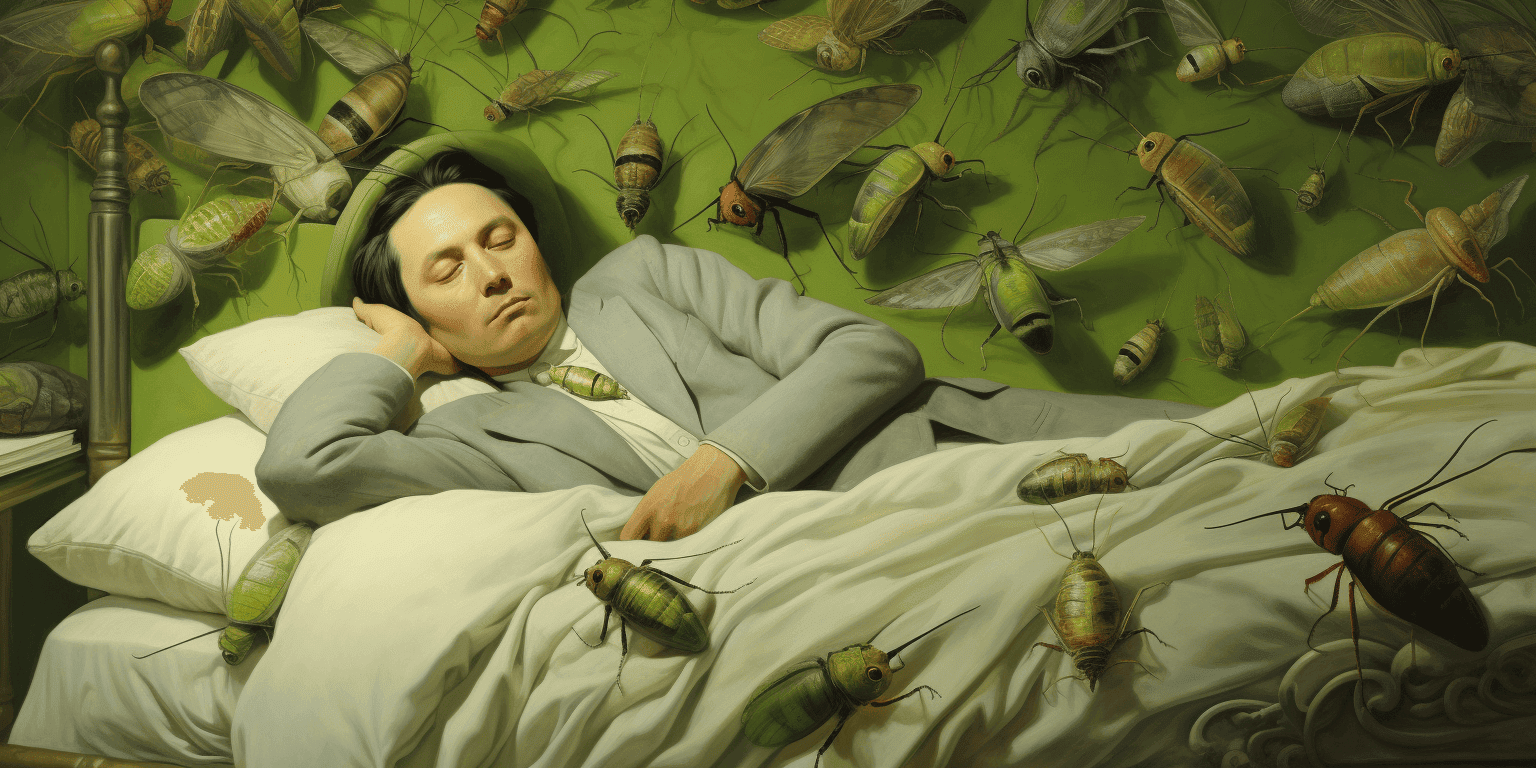
Gestalt dreamwork invites us to interpret our dreams in an active conscious process of direct engagement. This means personally delving into the meaning of dream elements like bugs in highly interactive, insightful, and meaningful ways.
As an example, Gestalt therapy encourages close interaction with the bugs in our dreams, such as through dialoguing. This means talking to the elements in our dreams. There’s one recorded example of this technique’s effectiveness specifically relating to bug dreams.
Another technique would be to roleplay as the most impressive elements in our dreams. In Gestalt therapy, we may be asked to “act out” as the bugs in our dreams. This process helps to draw out intense or hidden emotions that are difficult to state directly.
Conclusion
Most people have a distaste for bugs. They crawl, buzz, bite, and skitter, and so dreaming of bugs can often leave us disturbed or worried. However, while they may reflect fear and anxiety in life, they also embody healing, relief, and transformation.
Interpreting bugs in our dreams, no matter how terrifying or nerve-wracking at first, can spring us forward into a more involved process of understanding our inner selves. In doing this, we improve our well-being and better navigate our waking lives.

